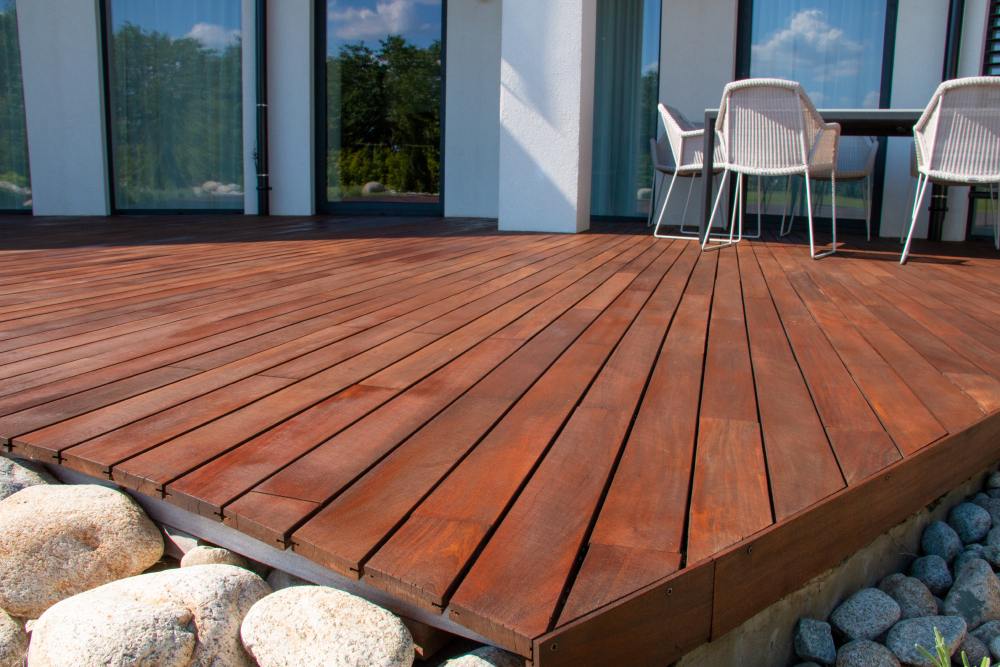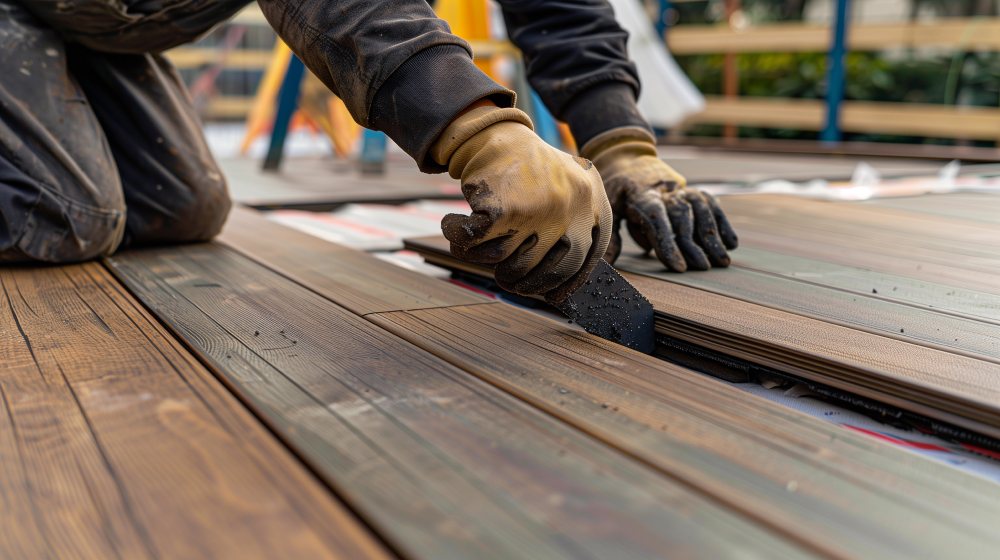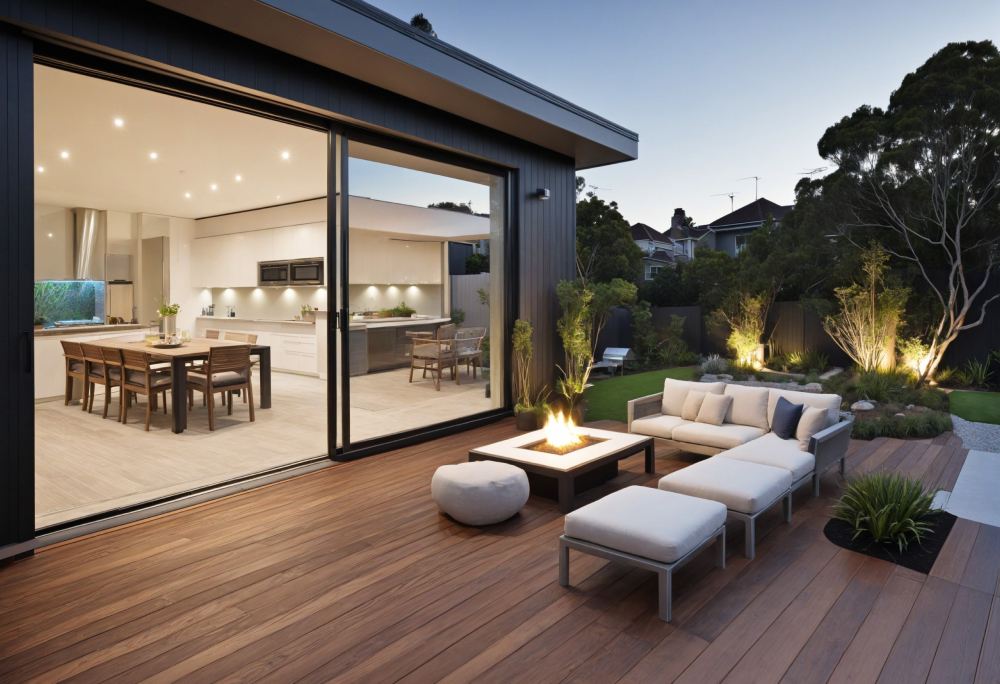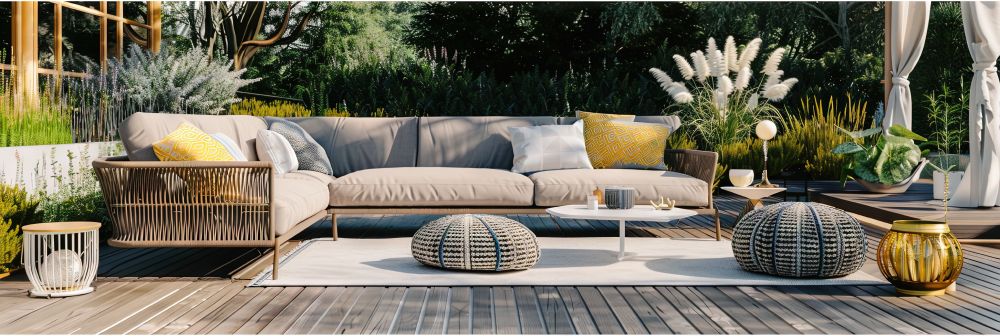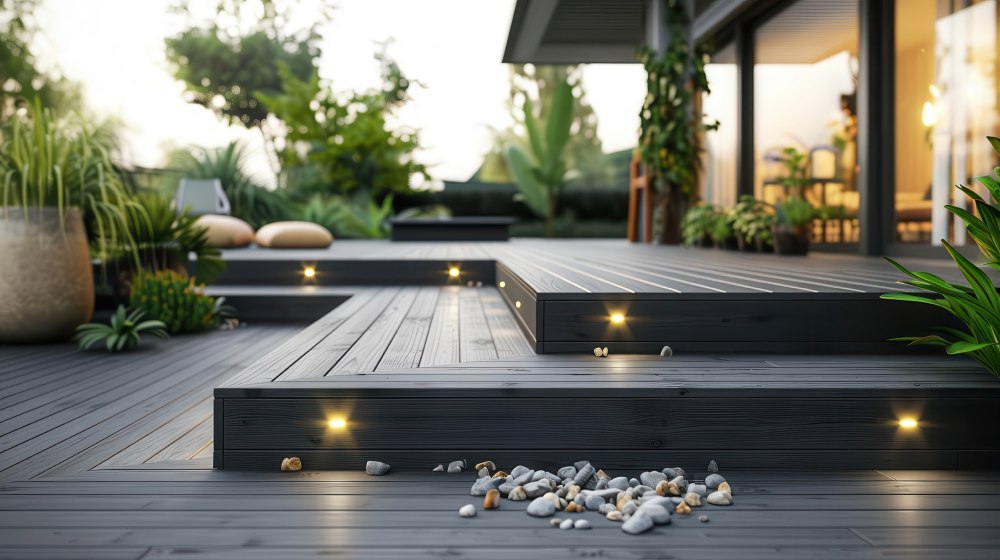1. Wood Deck Railings
Overview: Wooden railings offer a classic, natural look that complements many deck styles, particularly traditional and rustic designs. They can be customized in various ways through staining, painting, and carving.
Safety:- Strength: When properly installed, wooden railings provide sturdy support and are capable of withstanding significant force.
- Height and Spacing: Ensure that the height and spacing of balusters meet local building codes to prevent falls and injuries.
- Versatility: Wood can be easily shaped and styled to match various design aesthetics. Options include traditional pickets, intricate carvings, and modern horizontal slats.
- Customizable: Wood can be painted or stained in any color to match your deck or home’s exterior.
- Regular Upkeep: Requires regular maintenance, including sealing, staining, or painting to protect against moisture, insects, and UV damage.
- Inspection: Periodic inspections are necessary to identify and repair any signs of rot, splintering, or warping.
- Natural Aesthetic: Provides a warm, natural look that blends well with outdoor environments.
- Customizable: Easily customizable in terms of design and color.
- Maintenance: High maintenance requirements compared to other materials.
- Durability: Susceptible to rot, insects, and weathering if not properly maintained.
Conclusion: Wood deck railings are ideal for those seeking a classic, customizable look and are willing to invest time in regular maintenance. They offer great versatility in design but require consistent care to ensure longevity and safety.
2. Metal Deck Railings
Overview: Metal railings, including aluminum, wrought iron, and steel, offer a modern and durable option for deck railings. They are known for their strength and low maintenance.
Safety:- Strength: Metal railings are extremely strong and can withstand high levels of force, providing excellent safety.
- Code Compliance: Easy to meet building codes for height and spacing, ensuring they prevent falls and injuries.
- Modern Look: Provides a sleek, contemporary appearance that complements modern and industrial design styles.
- Variety: Available in various styles, including simple, clean lines and more ornate, decorative designs.
- Low Maintenance: Generally requires minimal maintenance, especially aluminum, which is resistant to rust and corrosion.
- Inspection: Regular inspection for rust (especially with wrought iron and steel) and touch-up painting or coating may be necessary.
- Durability: Highly durable and resistant to weather and pests.
- Low Maintenance: Requires minimal upkeep compared to wood.
- Cost: Can be more expensive than wood initially.
- Heat Retention: Metal can become hot to the touch in direct sunlight.
Conclusion: Metal deck railings are an excellent choice for those seeking durability, low maintenance, and a modern aesthetic. While they may have a higher upfront cost, their long-term durability and minimal upkeep make them a practical option.
Join HICP Homeowner’s Alliance
Connect with experts, get special discounts and enjoy member benefits
3. Composite Deck Railings
Overview: Composite railings are made from a blend of wood fibers and plastic, offering the appearance of wood with the durability of synthetic materials. They are available in a variety of colors and styles.
Safety:- Strength: Provides strong support and can withstand significant weight and force.
- Code Compliance: Designed to meet building codes for safety, including height and spacing requirements.
- Wood-like Appearance: Mimics the look of natural wood without the high maintenance.
- Color Options: Available in a wide range of colors and finishes to match composite decking and other outdoor elements.
- Low Maintenance: Resistant to rot, insects, and UV damage. Does not require painting, staining, or sealing.
- Cleaning: Occasional cleaning with soap and water is typically sufficient to maintain appearance.
- Durability: Long-lasting and resistant to many common issues that affect wood.
- Aesthetic Appeal: Provides a wood-like appearance without the maintenance.
- Cost: Generally more expensive than wood.
- Heat Retention: Can retain heat, making the surface warm to the touch in direct sunlight.
Conclusion: Composite deck railings are a great option for those who want the look of wood without the maintenance. They offer durability and a range of styles, making them suitable for various design preferences.
4. Glass Deck Railings
Overview: Glass railings provide a contemporary, unobstructed view, making them ideal for decks with scenic vistas. They are typically framed with metal or wood.
Safety:- Strength: Made from tempered or laminated glass, these railings are very strong and safe.
- Visibility: Provides clear visibility, which can enhance safety by allowing for a clear line of sight across the deck.
- Modern Aesthetic: Offers a sleek, modern look that can enhance the visual appeal of your deck.
- Unobstructed Views: Ideal for locations with beautiful scenery, as they do not obstruct views like other materials.
- Cleaning: Requires regular cleaning to maintain clarity and remove smudges, fingerprints, and debris.
- Durability: Resistant to weathering and corrosion, but frames (if metal) may need occasional maintenance.
- Aesthetic Appeal: Provides a high-end, modern look with unobstructed views.
- Durability: Highly durable and resistant to weather conditions.
- Cost: Typically more expensive due to the cost of glass and installation.
- Maintenance: Requires frequent cleaning to maintain appearance.
Conclusion: Glass deck railings are perfect for those who prioritize aesthetics and unobstructed views. They offer a modern, luxurious look but require regular cleaning and have a higher upfront cost.
5. Cable Deck Railings
Overview: Cable railings use stainless steel cables tensioned between posts to provide a minimalist and modern appearance. They are popular for their sleek look and unobstructed views.
Safety:- Strength: Stainless steel cables are very strong and durable, providing reliable safety.
- Code Compliance: Must be properly tensioned and spaced to meet safety codes, preventing climbing and falling.
- Modern Look: Offers a clean, contemporary appearance that complements modern and industrial designs.
- Unobstructed Views: Thin cables provide minimal visual obstruction, maintaining open views.
- Low Maintenance: Stainless steel cables are resistant to rust and corrosion, requiring minimal maintenance.
- Inspection: Regularly inspect the tension and condition of the cables to ensure safety and integrity.
- Aesthetic Appeal: Sleek, modern look with minimal visual obstruction.
- Durability: Highly durable and low maintenance.
- Installation: Requires precise installation to ensure proper tension and safety.
- Cost: Can be more expensive due to materials and installation complexity.
Conclusion: Cable deck railings are ideal for those seeking a modern, minimalist look with minimal visual obstruction. They offer durability and low maintenance but require precise installation and can be more costly.
6. Vinyl Deck Railings
Overview: Vinyl railings are made from PVC and offer a low-maintenance, durable option for deck railings. They are available in various styles and colors.
Safety:- Strength: Provides good strength and support, suitable for most residential applications.
- Code Compliance: Meets safety standards for height and spacing, ensuring safe use.
- Versatile: Available in various styles, from traditional to modern, and a range of colors.
- Consistency: Provides a uniform appearance with consistent color and finish.
- Low Maintenance: Resistant to rot, insects, and weathering. Does not require painting or staining.
- Cleaning: Easy to clean with soap and water.
- Durability: Long-lasting and resistant to many common issues that affect wood.
- Low Maintenance: Requires minimal upkeep, making it a practical choice.
- Appearance: May not have the same natural look and feel as wood or other materials.
- Color Fading: Over time, some vinyl railings may experience color fading from UV exposure.
Conclusion: Vinyl deck railings are a practical, low-maintenance option that offers durability and a range of styles. They are ideal for those who prioritize ease of maintenance and consistent appearance.
ConclusionChoosing the right deck railing system involves balancing safety, style, and maintenance considerations. Wood offers a classic, customizable look but requires regular upkeep. Metal provides durability and low maintenance with a modern aesthetic. Composite combines the appearance of wood with the durability of synthetic materials. Glass offers unobstructed views and a high-end look but requires frequent cleaning. Cable railings provide a sleek, minimalist appearance with minimal visual obstruction, while vinyl offers a low-maintenance, versatile option. By considering your design preferences, maintenance capabilities, and safety needs, you can select the perfect railing system to enhance your deck and outdoor living space.

